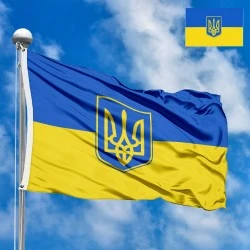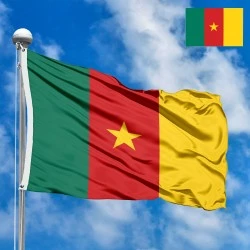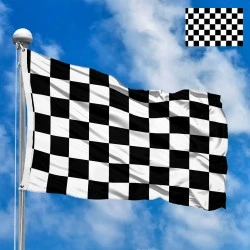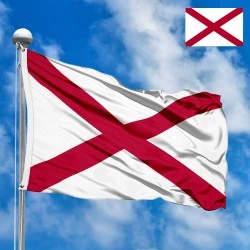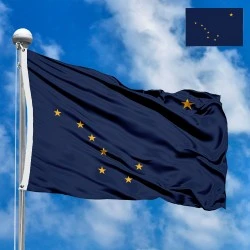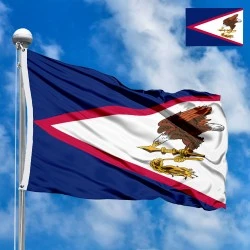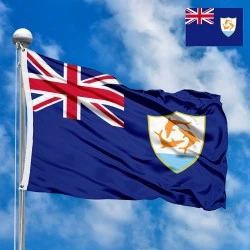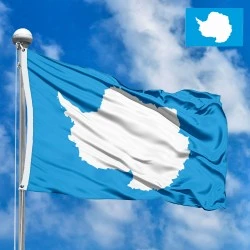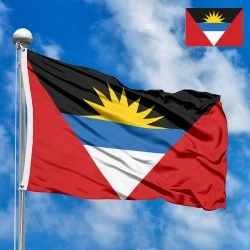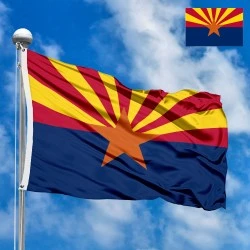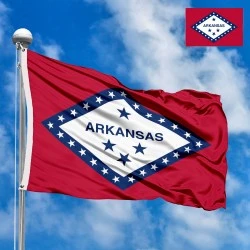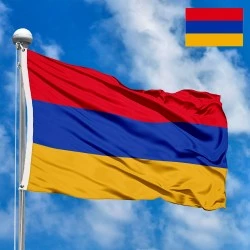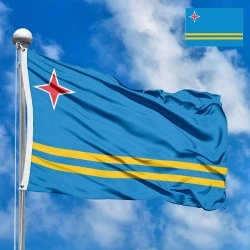Flag of Ukraine
- Flag Type: State
- Proportions (official): 2:3
- Official name: Ukraine
- Sovereignty (year): YES (1991)
- Member of Organizations: UN
- Country code, territory: UA, UKR, 804
- Capital: Kyiv
- Large cities: Kharkiv, Odesa, Dnipro, Lviv, Zaporizhzhia
- Population: 32,000,000 (2024, UN)
- Religions: Orthodoxy ~60%, Greek Catholicism ~8%, etc.
- Area (km²): 603 549
- Highest point: Mount Hoverla (2,061 m)
- Lowest point: Kuyalnyk Estuary (–5 m)
- Currency: Hryvnia (UAH, ₴)
- Languages: Ukrainian
- Dialing code: +380
- National domain: .ua
Flag Information
General information
Demography and Culture
Economy and communications
- All Flags
- Flags of Countries by Continent
-
Flags of Organizations
- Flags of UN countries
- Flags of the European Union countries
- Flags of NATO countries
- Flags of the countries of the Organization of Islamic Cooperation
- Flags of the countries of the Organization of American States
- Flags of the Arab League countries
- Flags of the African Union countries
- Flags of the countries of the Union of South American Nations
- Flags of the Commonwealth of Nations
- Flags of the countries of the Secretariat of the Pacific Community
- Flags of the Nordic Council countries
- Flags of the Caribbean Community
- Flags of the countries of the Association of Southeast Asian Nations
- Flags of the East African Community
- Flags of the countries of the Organization of Turkic States
- LGBT Community Flags
- Historical Flags
- Ethnic Flags
- Flags of the USA (states)
Description
The flag of Ukraine, a captivating symbol of its long and often challenging history, is a bicolor banner of two equally sized horizontal bands: a serene blue above a vibrant yellow. This powerful combination speaks volumes about the Ukrainian spirit, its connection to the land, and its unwavering pursuit of freedom and self-determination.
Dimensions, Colors, and Arrangement of Elements: The design of the Ukrainian flag is characterized by its simplicity and profound symbolism.
-
The flag typically has an aspect ratio of 2:3, meaning its width is one and a half times its height, creating a balanced rectangular shape.
-
It features two horizontal stripes of equal width, each occupying exactly half of the flag's vertical dimension. The colors are arranged as follows:
-
The top stripe is blue. This celestial hue represents the clear, peaceful sky that stretches over Ukraine. More profoundly, it symbolizes peace, spirituality, and the vast, open skies that are characteristic of the Ukrainian landscape. It evokes a sense of hope, tranquility, and the boundless aspirations of the nation.
-
The bottom stripe is yellow. This radiant color signifies the golden wheat fields that dominate Ukraine's fertile lands, often referred to as the "breadbasket of Europe." It embodies prosperity, abundance, and the richness of the soil. Historically, it also represents the sunlight, warmth, and the vital energy that sustains life and fosters growth.
-
History of the Flag's Creation and Adoption: The journey of the Ukrainian flag to its present form is a testament to the nation's enduring identity through centuries of complex history.
-
Ancient Origins and Early Symbolism (Pre-Kyivan Rus'): The combination of blue and yellow (or gold) colors has deep roots in Ukrainian lands, predating the modern nation-state. These colors were often used in heraldry and banners of various principalities and Cossack hosts. For example, the coat of arms of the Kingdom of Galicia–Volhynia featured a golden lion on a blue field.
-
Kyivan Rus' and Cossack Era: During the era of Kyivan Rus', blue and yellow were present in some princely symbols. Later, during the Cossack Hetmanate (17th-18th centuries), Cossack banners often featured a golden (yellow) cross, stars, or other symbols on a blue field, highlighting a strong historical connection to these colors.
-
National Awakening (19th Century): In the 19th century, during the period of the Ukrainian National Revival, the blue and yellow colors gained prominence as symbols of Ukrainian identity. In 1848, during the Spring of Nations, the Main Ruthenian Council in Lviv (then part of the Austrian Empire) officially adopted a blue and yellow flag as the symbol of the Ruthenian (Ukrainian) people, based on the coat of arms of the Lviv region (golden lion on a blue background). This moment is considered a crucial step towards the modern flag.
-
Ukrainian People's Republic (1917-1921): After the Russian Revolution in 1917, when Ukraine declared its independence as the Ukrainian People's Republic (UPR), the blue and yellow flag was officially adopted as the national flag. The order of colors (blue above yellow) was established, signifying the clear sky above the golden wheat fields.
-
Ukrainian State (1918): Under Hetman Pavlo Skoropadsky's Ukrainian State in 1918, the flag remained blue and yellow, confirming its status as the primary national symbol.
-
Soviet Era (1921-1991): With the establishment of the Ukrainian Soviet Socialist Republic (Ukrainian SSR) in 1922, the blue and yellow flag was suppressed. For decades, Ukraine used various versions of red flags with communist symbols (hammer and sickle, star). Displaying the blue and yellow flag was considered a crime against the Soviet state. Despite the suppression, the blue and yellow flag remained a powerful, underground symbol of Ukrainian independence and resistance for many patriots.
-
Perestroika and Re-emergence (Late 1980s): During the period of perestroika in the late 1980s, as Soviet control weakened, the blue and yellow flag began to re-emerge in public demonstrations.
-
Declaration of Independence (1991): On August 24, 1991, when Ukraine declared its independence from the Soviet Union, the blue and yellow flag was raised over the Verkhovna Rada (parliament) building in Kyiv, a profoundly symbolic moment.
-
Official Adoption (1992): The blue and yellow flag was officially adopted as the national flag of independent Ukraine on January 28, 1992.
Symbolism and Meaning for Residents: For the people of Ukraine, the flag is a living, breathing symbol, deeply intertwined with their identity, aspirations, and ongoing struggle for freedom and territorial integrity.
-
National Identity and Sovereignty: The flag is the paramount symbol of Ukrainian national identity and sovereignty. It represents the independent existence of the Ukrainian state and its unique cultural heritage.
-
Connection to Land and Prosperity: The yellow stripe represents the fertile Ukrainian land and its abundant wheat fields, signifying prosperity and the nation's agricultural wealth. The blue stripe above symbolizes the clear sky, representing peace and the open future. This connection to the land is fundamental to Ukrainian self-perception.
-
Freedom and Independence: The flag, through its colors and history, embodies the centuries-long struggle for freedom and independence. For Ukrainians, it’s a powerful reminder of their resilience against foreign domination and their unwavering commitment to self-determination.
-
Peace and Hope: The blue sky represents peace and hope for a bright, serene future, despite the country's turbulent past and present challenges.
-
Unity and Resilience: In times of adversity, especially during the ongoing full-scale invasion, the flag serves as a potent symbol of national unity and resilience. It rallies people together, fostering a collective spirit of resistance and determination.
-
Memory of Ancestors' Struggles: The flag is a constant reminder of the sacrifices made by generations of Ukrainians who fought for their nation's right to exist. It honors their memory and inspires continued resistance.
-
Aspiration for European Future: For many, the flag also symbolizes Ukraine's aspiration to join the European family of nations, embodying democratic values, freedom, and a commitment to a peaceful, prosperous future within Europe.
-
International Recognition: When seen internationally, the Ukrainian flag immediately evokes sympathy and solidarity, representing a nation bravely defending its values and existence.
Interesting Facts: The Ukrainian flag holds a wealth of fascinating historical and cultural details that underscore its significance.
-
One of the Oldest Color Combinations: The blue and yellow color combination in Ukrainian heraldry and vexillology dates back to the Kyivan Rus' era, making it one of the oldest and most enduring color schemes in the region.
-
The "Sky and Wheat" Interpretation: The most popular and poetic interpretation of the blue and yellow colors – the blue sky over golden wheat fields – is not just a modern invention but has roots in popular understanding for centuries, reflecting the agricultural heartland of Ukraine.
-
Brief Inversion in 1918: During the short-lived Ukrainian State under Hetman Pavlo Skoropadsky in 1918, there was a brief period when the colors of the flag were sometimes inverted (yellow over blue), possibly influenced by Austrian heraldry. However, the blue over yellow quickly re-established itself as the dominant and official order.
-
Symbol of Resistance During Soviet Rule: Throughout the Soviet era, owning or displaying the blue and yellow flag was a severe offense, punishable by imprisonment. It became a powerful, underground symbol of dissent and national resistance, often secretly sewn and passed down.
-
Record for Largest Flag: On August 23, 2023 (Ukrainian Flag Day), a record-breaking flag measuring 250 by 75 meters (approx. 820 by 246 feet) was displayed in Kyiv, a powerful act of national unity during the full-scale invasion.
-
International Solidarity Symbol: Since the full-scale Russian invasion in 2022, the Ukrainian flag has become an international symbol of solidarity, resistance, and the fight for democratic values and territorial integrity against aggression. It is flown in cities worldwide as a gesture of support.
In the demonstration images, full-size flags are shown with proportions of 2:3, and hand-held flags with proportions of 1:2.
Color
| COLOR | PANTONE | CMYK | RGB | HEX |
|---|---|---|---|---|
| 2935 C | 100-63-0-2 | 0-87-183 | #0057B7 | |
| 012 C | 0-2-98-0 | 255-215-0 | #FFD700 |
Donation
Download
Completely free for commercial and non-commercial use (public domain).
You can freely use them in your news magazines, websites, software, mobile applications.
We appreciate a backlink to https://flagssite.com
Vector files - Flag of Ukraine (PDF, EPS, SVG, AI)
- .pdf, .eps, .svg, .ai format; RGB color model; Official Proportions.
"30" - image size (by height) in Pixels (px).
!!! For resizing, use the Latin (eng) keyboard layout.
<img src="https://flagssite.com/flags/00svg/20001.svg" height="30" alt="Flag of Ukraine">
 Vector files 2:3, 1:2
Vector files 2:3, 1:2
- PDF format; RGB, PANTONE/CMYK color model; aspect ratio - 2:3, 1:2.
Raster files - Flag of Ukraine (PNG, JPG)
 Waving flag
Waving flag
- PNG format (transparent background), 72dpi, dimensions in Pixels (px), aspect ratio 3:4.
- 15х20 px
- 30х40 px
- 60х80 px
- 120x160 px
- 240x320 px
 Sizes:
Sizes:
"v15" - image size (by height); if necessary, replace with available: v15, v30, v60, v120, v240.
!!! For resizing, use the Latin (eng) keyboard layout.
<img src="https://flagssite.com/flags/v15/20001.png" alt="Flag of Ukraine">
 Round flag
Round flag
- PNG format (transparent background), 72dpi, dimensions in Pixels (px), aspect ratio 1:1.
"d15" - image size (diameter); if necessary, replace with available: d15, d30, d60, d120, d240.
!!! For resizing, use the Latin (eng) keyboard layout.
<img src="https://flagssite.com/flags/d15/20001.png" alt="Flag of Ukraine">
 Rectangular flag 2:3
Rectangular flag 2:3
- JPG format, 72dpi, dimensions in Pixels (px), aspect ratio 2:3.
"h30" - image size (by height); if necessary, replace with available: h15, h30, h60, h120, h240, h360, h480.
!!! For resizing, use the Latin (eng) keyboard layout.
<img src="https://flagssite.com/flags/h30/20001.jpg" alt="Flag of Ukraine">


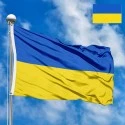
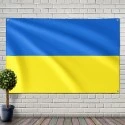
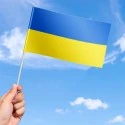

 Sizes:
Sizes:
 Sizes:
Sizes:
